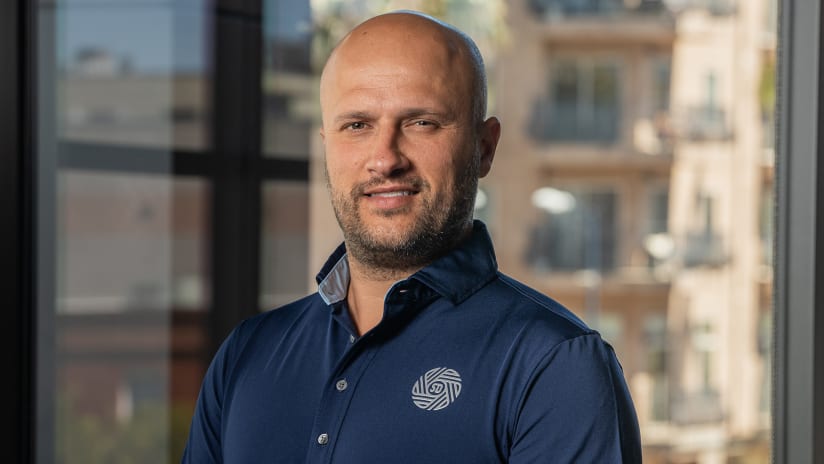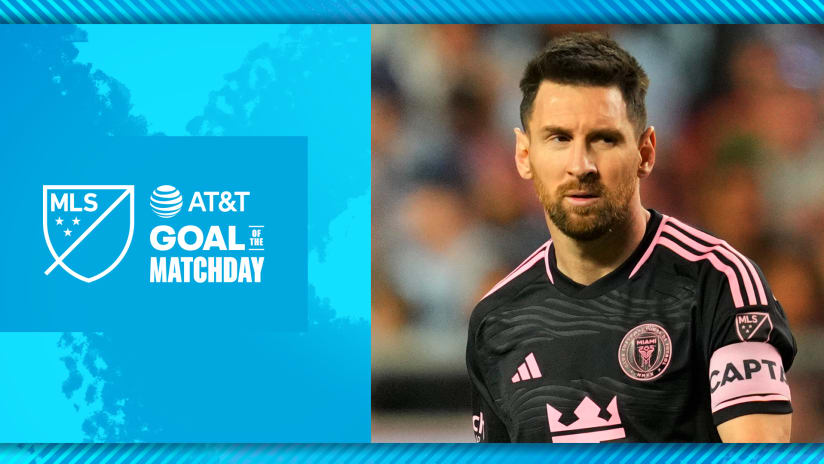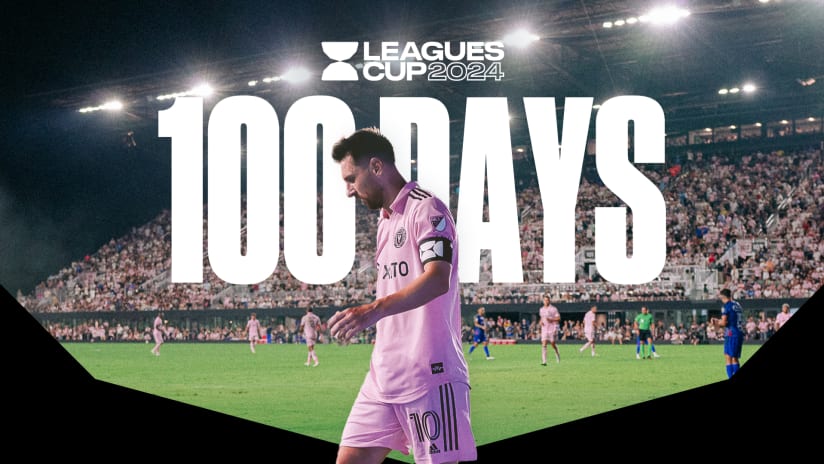On Friday, Major League Soccer will hold its 13th annual draft of college players -- the SuperDraft. It already has forged an intriguing history.
Famous firsts: So, who were the very first players taken in the league's first three drafts in 1996, and how did they fare?
In the player allocation draft -- when the 10 original teams stocked themselves in a 16-round draft -- the Columbus Crew chose forward Brian McBride. Although injuries sometimes have limited his playing time and effectiveness, McBride was a productive and is a regular member of the U.S. national team. McBride, who has a lethal shot with his head, scored 62 goals and added 45 assists in 161 games for the Columbus Crew. He became an integral member of the U.S. World Cup team that reached the quarterfinals in 2002. He currently plays for Fulham in the English Premiership.
In the supplemental draft, the MetroStars selected veteran Italian defender Nicola "Wrong Way" Caricola. He lasted all of one season in the league and forged a reputation for scoring own goals. In fact, his own goal with 12 seconds in the match remaining gave the New England Revolution a 1-0 win against the MetroStars in the latter club's first-ever home game. Caricola retired from soccer after one year in the league in what was considered a wasted pick for the future.
And in the college draft, the Kansas City Wiz -- that's what they were called at the time, not the Wizards -- grabbed midfielder Matt McKeon, who became a solid defensive midfielder. The former St. Louis University All-American was traded to the Colorado Rapids, returning to the Wizards. McKeon, who played through the 2002 season, performed in 172 matches, starting in 153. He scored 13 goals and set up 19 others.
Not so famous seconds: So, who followed Freddy Adu as the second selection of the 2004 draft?
If you guessed defender Chad Marshall, you are correct. He was taken by the Columbus Crew. Marshall became a fixture in the Crew line, starting 27 games, appearing in 28 for a total of 2,446 minutes.
Last man standing: Goalkeeper Garth Lagerwey was the latest surviving member of the 1996 allocation draft. He was made the 150th selection (out of a possible 160) by D.C. United, in the 15th round of that draft. United defender Geoff Aunger is the field player who has lasted the longest. He was taken in the 13th round, No. 125 overall, by the Revolution.
Lagerwey, now general manager at Real Salt Lake, lasted five seasons, performing for the Wizards, Dallas Burn and Miami Fusion, recording a 1.80 goals-against average and a 25-20-0 mark.
Some real gems: Not every important player is taken in the first round. Some gems are found in the latter rounds. Remember, before this year both the college and supplemental drafts had three rounds apiece.
The supplemental had some rare finds as well. The Galaxy took defender David Vaudreuil in the second round (17th overall selection) in the 1996 supplemental draft, and he enjoyed a fruitful career with D.C. United, the Miami Fusion and the Rapids. Brazilian Welton was taken by the Revs in the second round that year.
UCLA goalkeeper Kevin Hartman was tabbed by the Galaxy as the 29th and next-to-last pick, in the third round of the 1997 college draft. United keeper Tom Presthus was taken with the last pick of the second round that year.
The hat-trick: Forward Darren Sawatzky was drafted three times. He was chosen by the Revs in the 1996 college draft, by the Dallas Burn in the 1998 supplemental draft and by the Colorado Rapids in the 1999 supplemental draft.
Another hat-trick: In the third round of the 2003 draft, Chicago selected three players on consecutive picks, an unprecedented feat. The Fire took Logan Pause as the 24th selection, Ryan Mack as 25th and Phil Swenda as 26th.
The resurrection: Some players are drafted to start their careers. Others are drafted and the wind-up is that their career is revived beyond their wildest dreams.
Take, for instance, Kerry Zavagnin. After two years with the MetroStars, Zavagnin decided to play in the A-League. He rediscovered himself, and so did the Kansas City Wizards, who chose him as the 30th selection (sixth pick of the third round) of the 2000 draft. Not only did Zavagnin become a vital member (as a defensive midfielder) of the Wizards' championship team that season, he eventually became a part of the U.S. national team pool and earned Best XI honors last season.
Breaking up the Seals: Three of the top four picks in the 1998 supplemental draft came from the San Francisco Bay Seals of the A-League. The Chicago Fire took defender C.J. Brown on the very first selection. After the Mutiny chose Kansas City Attack forward Brian Loftin next, the Clash tabbed Tim Weaver and the Colorado Rapids picked forward Marquis White. No other Seals player was selected in the rest of the draft.
The med student: Even though he was the top college player in 1996 and was the second overall pick of the 1997 draft by the Mutiny, University of Virginia midfielder Mike Fisher decided not to turn pro. He decided to go to medical school, instead. The 1997 college draft was not very kind to the Mutiny. The Mutiny took a pass in the second round of the 1997 college draft and picked forward Musa Shannon in the third round. Wouldn't have been easier to take Shannon in that second round?
A writer's favorite: While this doesn't deal directly with a particular draft pick, one of this writer's favorite draft stories involves yours truly -- at the 2003 draft in Kansas City. It was about a half hour before the proceedings began when United coach Ray Hudson came up to me and said, "You look like someone who would have something for an upset stomach." Hudson was hoping for an antacid to calm his queasy stomach. All I had was Pepto-Bismol, which he gladly took. Minutes later, Hudson took Alecko Eskandarian as the very first selection.
More than happy to be there: Because he had played but eight games for St. John's University the previous fall, senior midfielder Chris Corcoran didn't think he had much of a chance to be drafted by any of the 12 teams at the 2005 draft in Baltimore.
Still, his father managed to convince him to attend the MLS SuperDraft on Friday. While many of the aspiring pro players sat in a special section at the Baltimore Convention Center hoping for their name to be announced by either commissioner Don Garber or deputy commissioner Ivan Gazidis, Corcoran sat in the general audience in the back, just happy to be there. So, imagine the surprise when the 21-year-old Corcoran heard that he had been selected by the MetroStars.
"Beyond excited," he said minutes after he was chosen. "My father actually had to talk me into coming down because I wasn't sure I was going to be picked up by anyone. To get picked up by the MetroStars is like a dream come true. Because of my injuries, I wasn't sure. I played in only eight games and I was fit for only one of them. I wasn't sure if that was enough to get drafted. Luckily it was, and I'm excited."
Sign of the times: In what had to be one of the strangest scenes ever at a draft, the very first pick of the 2006 SuperDraft, Marvell Wynne (yes, he was selected by the Metros, about two months before they changed their name to the Red Bulls) accommodated a request by 2004 Metros fan of the year John Russo and signed his head. Honest. You can't make this stuff up.
Michael Lewis covers soccer for the New York Daily News and is editor of BigAppleSoccer.com. He can be reached at SoccerWriter516@aol.com. Views and opinions expressed in this column are the author's, and not necessarily those of Major League Soccer or MLSnet.com.








